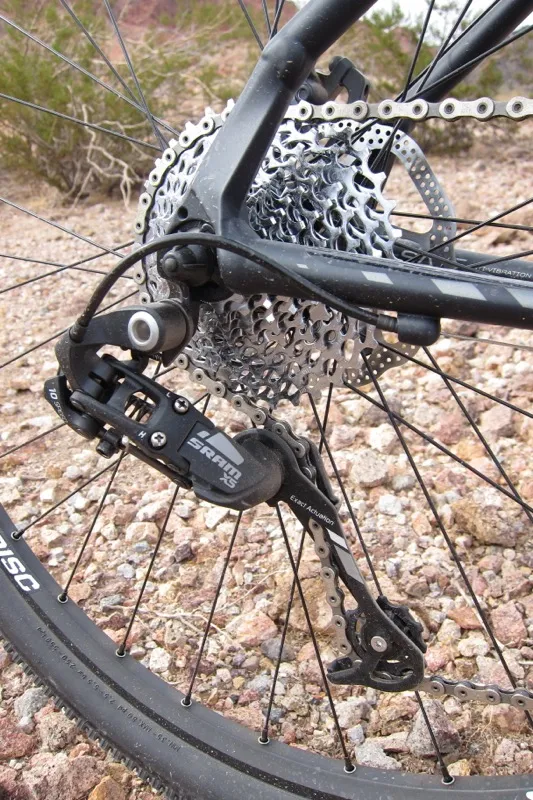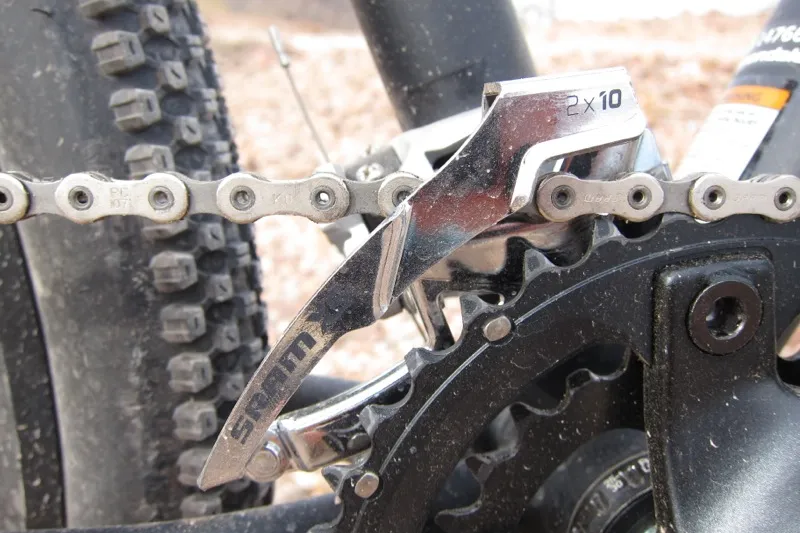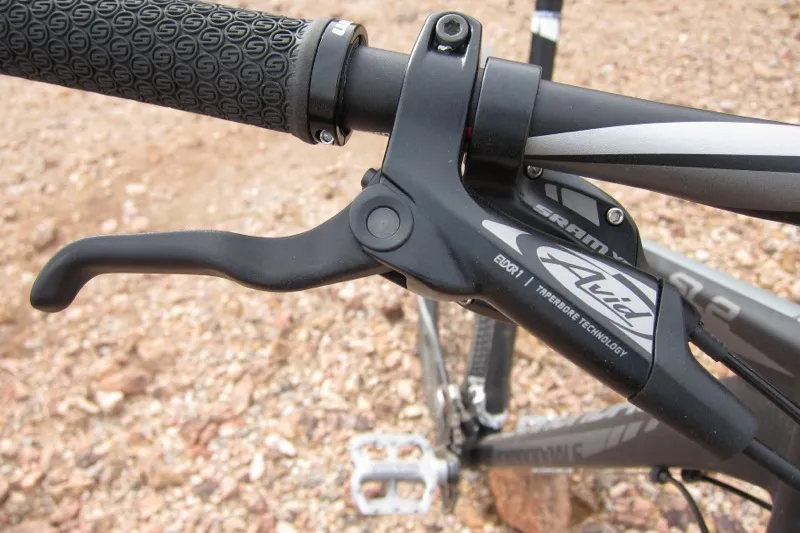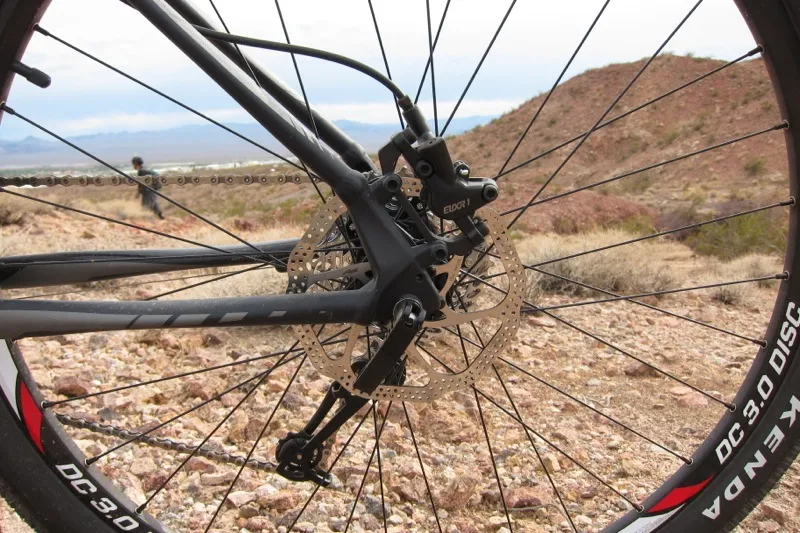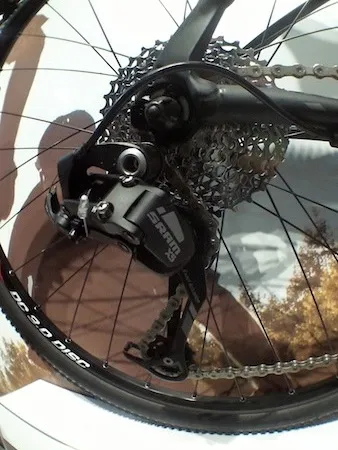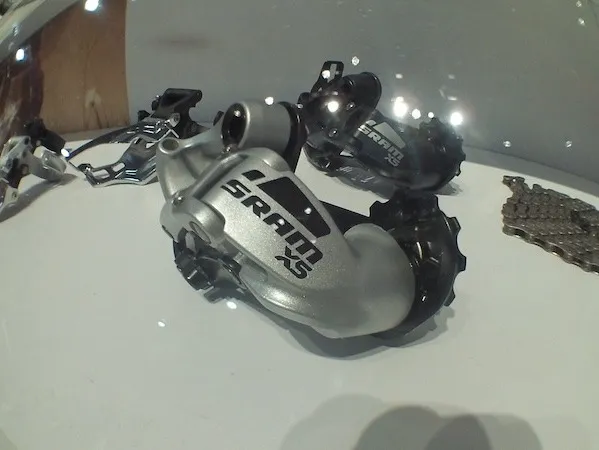SRAM's entry level X5 group, which will appear on bikes selling in the US for just under $1,200 to roughly $1,500, now has the look and feel of SRAM's entire mountain component line.
The group aligns with the rest of SRAM's 10-speed line and offers two 2x10-gearing options, as well as a single triple ring option. The 10-speed transmission can be paired Avid Elixir 1 brakes, which use the manufacturer's TaperBore master cylinder, for the look and feel of a full budget group.
On the trail: riding X5
We set out from the Dirt Demo at Interbike late Tuesday afternoon on Cannondale's Trail SL2 29er with a modified spec made up of an entire X5 transmission, Avid Elixir 1 brakes and Truvativ's base level cockpit components. While the cockpit and X5 crank were substitutions to Cannondale's 2012 spec, they keep the theme of the sub-$1,500 bike—wheels and tires and the new air sprung Recon Silver TK (Turn Key, for the Turn Key lockout) fork.

The Recon Silver TK air sprung fork led the way
In the most basic sense, X5 functions the same as any of the SRAM groups above it in the line. While shifts take a bit more thumb pressure and aren't quite as quick, they happen in a manner that's reasonably fast and quite accurate.
Like with many Elixir brakes, the Elixir 1 model we rode broke in quickly and provided good consistent lever feel and adequate stopping power, we only hope that this initial performance holds up over time. While the Elixir 1's feel is softer than a Shimano Deore, it's in a price range poised to give Tektro's Draco and Draco SL a run for its money. Tektro's Draco was the frontrunner in our 2011 sub-$1,000 bike test.
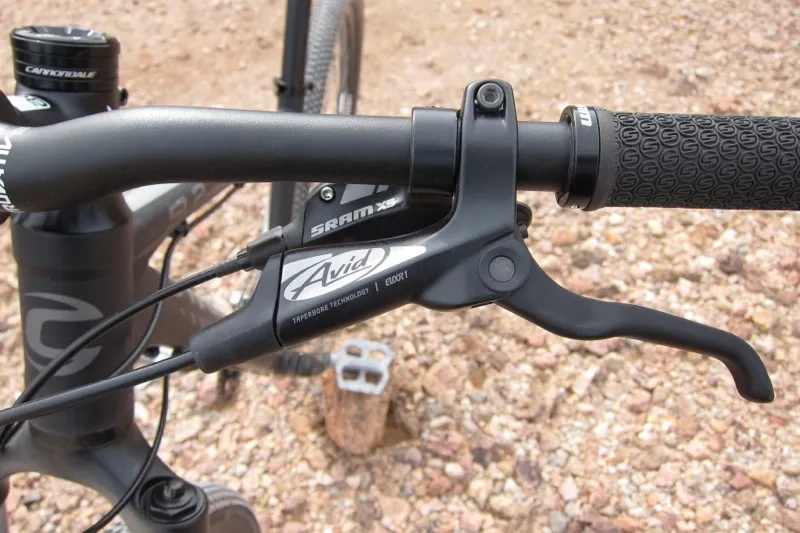
Avid's Elixir 1 lever
Overall, the X5 group presented an excellent entry-level performance in its first outing. Had the 2x10 group been used in our sub-$1,000 bike test it would have likely been a favorite performance among both the drive train and braking options.
Fit and finish: ergonomics and design from the upper end
SRAM previously released the details of their refurbished X5, which we reported on late last month, however Interbike proved our first hands on experience with the new components, the majority of which will be available in black or silver.
Touch points evoke the look and feel of the upper end groups and steer clear of plastic; the Avid Elixir 1 brake levers and main cable-pull levers are alloy. The heart of the X5 system may be the 2x10 cranks (US$135-$195), which are forged from 6061-alloy, but more importantly use the SRAM's top tier GXP and BB30 two-piece spindles and X-Glide paired and timed chainrings, both of which first appeared on SRAM's XX group. The 10-speed cassette ($75) also mirrors the original 10-speed group with the 11-36-tooth option.
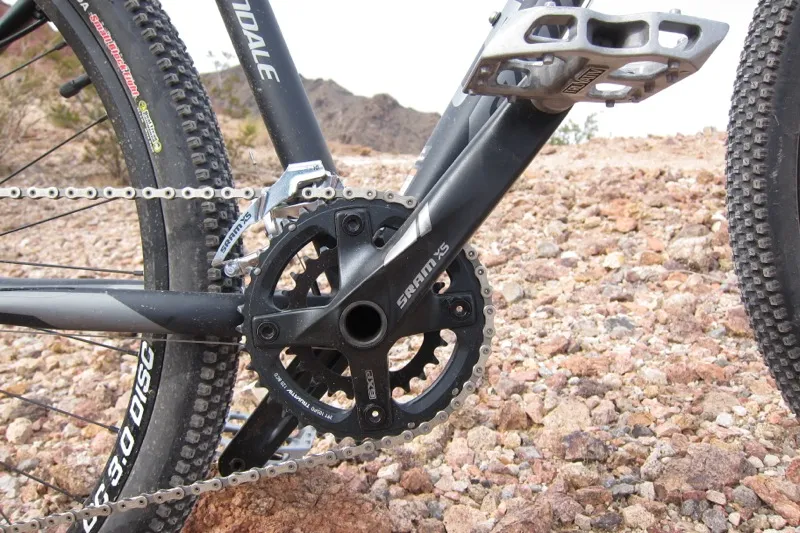
The X5 2x10 crank; the while it uses the X-Glide timed chainring concept, the inner ring is stamped from steel
The entire group keeps the look of the upper end groups, save for the logo, which is a final aesthetic touch many younger riders and racers may most appreciate.
Accessible technology
By bringing the 2x10 transmission to their most economical group, SRAM has effectively trickled down all of their latest key technologies to their entire line. The group offers those on a budget access to a large share to SRAM's most recent development work.
The new X5 has the potential to bring 2x10 shifting to the greatest number of riders, since it will see use on bikes that make up a huge share of the industry's sales volume. It has the potential to better the experience here, too, simply by pairing down the range of choices a new rider has to make when it comes to choosing a gear to ride in and an easier shifting their transmission. By narrowing the window of gear choice, and providing a range meant to work together across the entire cassette in either chainring—meaning much less poor crossover gearing—we expect 2x10 to bring less frustration to many a bike path or trail ride.
Look to for long term X5 testing and performance updates in the coming months here on BikeRadar.

